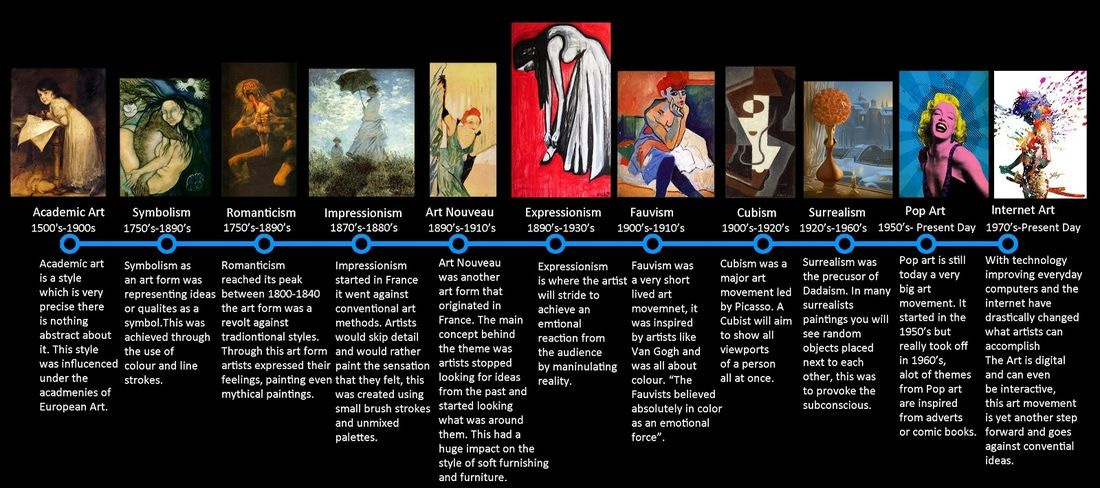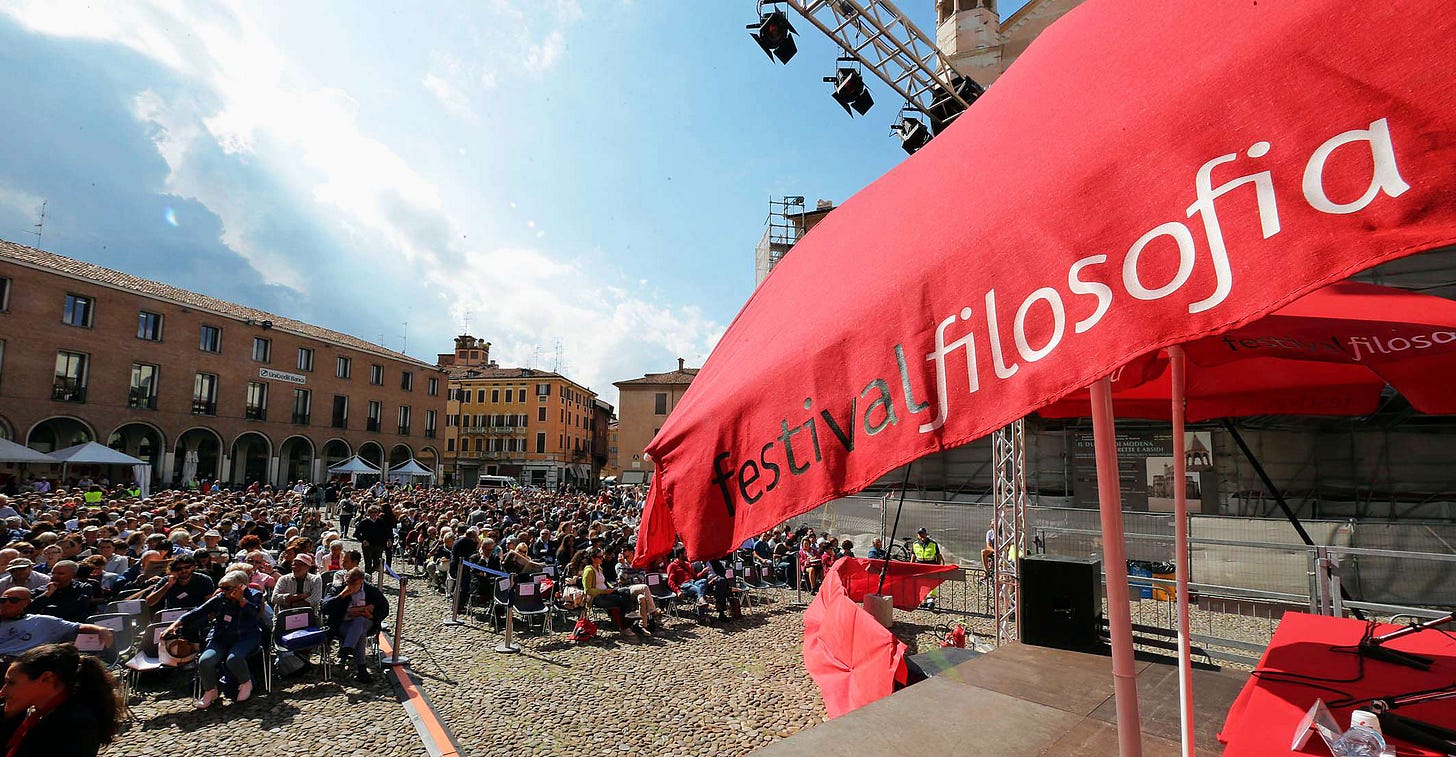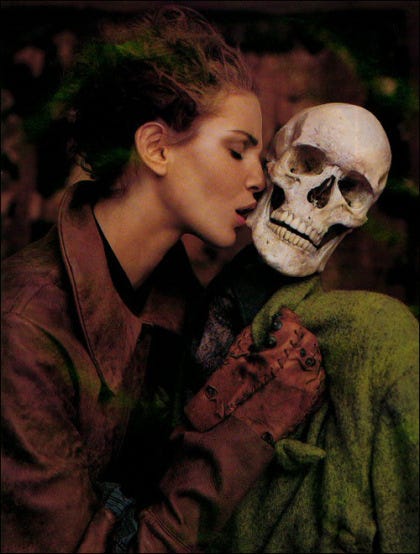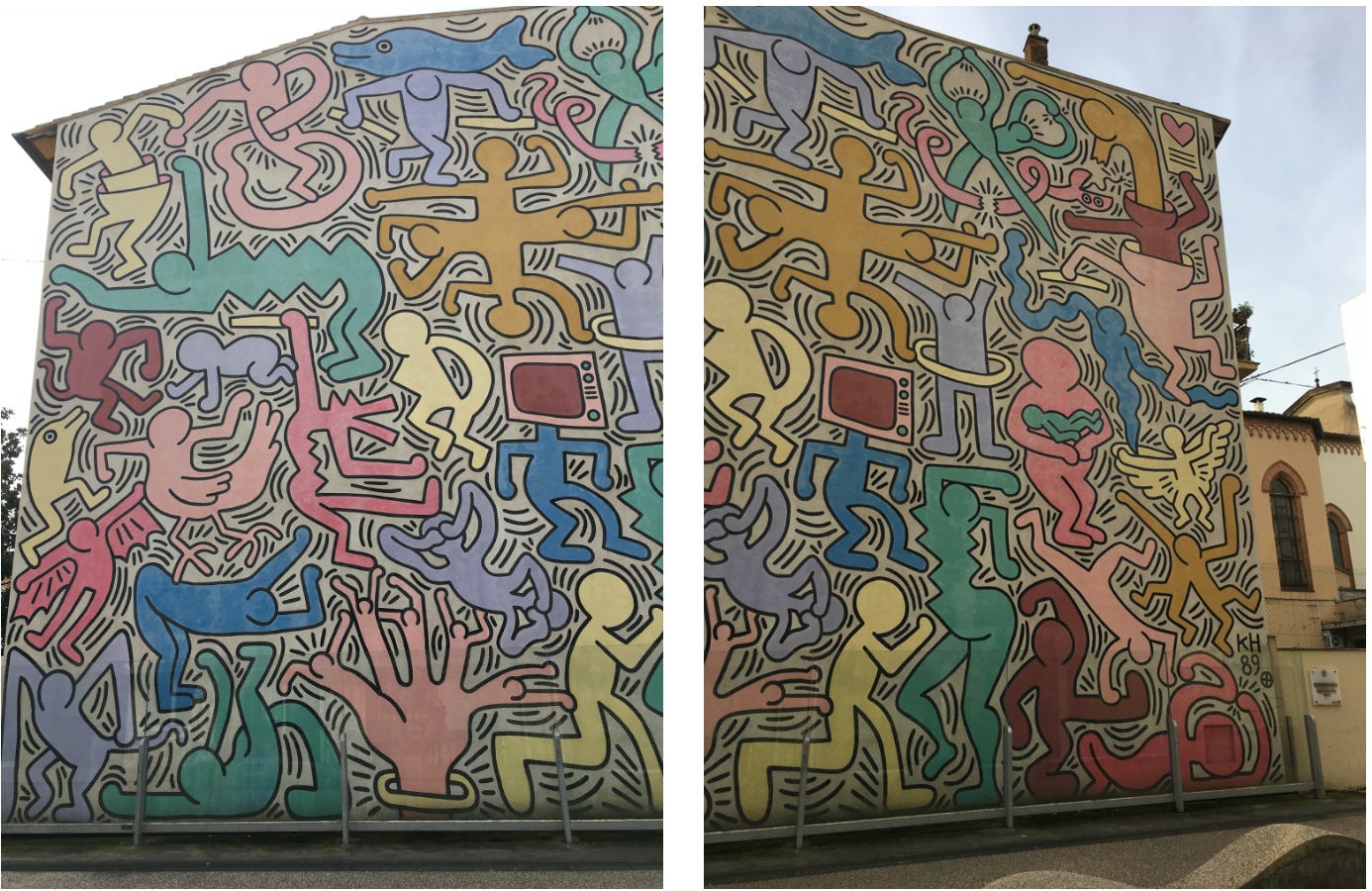Fashions
An expression of taste, fashions influence intellectual and ideological spheres, artistic and literary movements, habits, behaviors, and preferences.
They’re powerful because they conceal and support our secret desire and need to imitate others.
The word says it all—fasoun (c. 1300)—the ‘physical make-up or composition; form, shape; appearance,’ from Old French façon, fachon, fazon ‘face, appearance; construction, pattern, design; thing done; beauty; manner, characteristic feature.’
In turn, French comes from Latin factionem (12c.) ‘a making or doing, a preparing.’ Maybe we want to say it in Italian, mòda.1 Still from the French—mode— in turn from Latin’s modus ‘way, form, manner.’
Fast-forward to the 1630s and the meaning of the word fashion dictates ‘good style, conformity to fashionable society’s tastes.’
“To call a fashion wearable is the kiss of death. No new fashion worth its salt is wearable.”
Eugenia Sheppard, New York Herald Tribune, 1960
Fashion is a social phenomenon.
In a certain period and in a certain place, an aesthetic or behavioral model takes hold. This influences books and beliefs, the things we think and those we make. But it’s not a casual thing, this influence is generated.
In some cases the dominant aesthetic and the behaviors associated with it spread among a large number of people who end up recognizing themselves as a group in which such fashion(s) becomes an element of cohesion and identity.
The serial novel is ‘in.’ Intermittent fasting still in food culture, while alcohol consumption could be on the way out. Writing about writing continues to be fashionable; our view into the past less so. Valentino represents the enduring allure of high fashion2; Zara the quick fix of fast fashion.3

Fashion is an aspect we find in literature since the beginning—especially due to its transitory nature. Perhaps as a pleasant and welcome diversion to the other recurring literary theme—that of war.
Below, I lay out a few more thoughts and ideas on the historical and cultural weight of this expression of taste.
1/5
But first, a round of links. Since the last round-up on stored value, On Value in Culture published:
(🔒) When in Uncharted Territory—It’s useful to embrace the complexity of history rather than the simplicity of case studies.
Metaphors—Pervasive in our everyday lives, they influence not just language, but also our thoughts and actions.
(🔒) Close-up with Reality—How Caravaggio’s strong contrasts of light and dark represent the more sordid, unpalatable side of humanity.
Pilgrimage—A long journey of purpose and moral significance.
(🔒) Evil’s Fatal Attraction to Good—How one of the most famous noble rulers, a king true, used power to lead his kingdom to peace and prosperity.
What is Real?—It’s easy to prove that imagination makes things real—pick up a book and read.
(🔒) Half History, Half Magic—Over twenty years, Marguerite Yourcenar became the vessel for a long-dead Emperor's spirit and channeled his wisdom and humanity.
With many thanks to those who recommend, share, love this work of patience and love. Supporters can access full articles and commentary at The Vault (🔒).
2/5
Literary Fashion—In one of his (perhaps) most beautiful Operette Morali,4 Giacomo Leopardi has Death and Fashion converse as emblems. Leopardi criticized a culture that today we would define as ‘consumer culture,’ one with a short shelf life.
After introducing herself to Death as her sister,5 because they are both daughters of Transience, Fashion provides a list of customs and behaviors induced by her in human beings, which greatly favor the task of Madame Death.
By following Fashion, says Leopardi, man distances himself from nature, becomes corrupted, implements practices that make him die faster, dead before dying. Having recognized their relationship, Fashion and Death agree to operate better and consult each other on the best solutions they can adopt to make the best of every situation.
At Death’s request, the dialogue takes place while the two protagonists run. Running, never stopping, represents the essence of death and, above all, of fashion. Part of the dialogue is entertaining and a testimony to the fashions of the time (1824).
At the end of the operetta, the two entities discover that they’re from the same mother—impermanence.
“Vain trifles as they seem, clothes have, they say, more important offices than merely to keep us warm.”
Virginia Woolf, Orlando (1928)
Because of fashion’s ephemeral and transitory nature, literature has often snubbed it. Few writers have had the courage to include brands in their books as Bret Easton Ellis did.6 Brands that perhaps will speak to few in the future.
And yet, it’s a worthy challenge. Bontempielli7 said fashion isn’t just a whim, but in it “is hidden something fleeting, but no less true and exact, than the collective soul that it is destined to represent in its continuity.”
3/5
Eternal Youth—As he discussed the topic of fashion with the acumen he had on topics of custom, journalist and writer Leo Longanesi8 said , “There’s only one great fashion: youth.”9
Youth or youthfulness is indelibly linked with Jean Jacques Rousseau10 and the (hypothetical) ‘state of nature.’ People are innately good—society can be and often is a corrupting influence. It’s our surroundings that make us go bad.
The antithesis of the adult world from which it seeks to distance itself, youth views the imagined world of adulthood as corrupt, ruthless, and conservative.
Though the definitions of youth have been many, they often converge on ‘a social group made up of people aged about fifteen to twenty-five, who no longer fulfill the role of children, but are not yet conceded the role of adults by society.
Youth has its characteristic ways of thinking and behavior, a distinct system of models, norms and values.’
Who young people are differs significantly from one society to another, and from one group to the next. ‘Youths’ were first seen as a collective social phenomenon only several decades ago.

James Dean symbolized the cult of youth, because he was a typical hero whose life came to an early end.11 The cult of youth began to appear in Western society in the 1950s and intensified in the 1960s.
An international phenomenon linked to globalized music, fashion styles, etc. youth became the final stage of human development, instead of the preparatory stage for adulthood. And it’s never been so in fashion as it is today.
“From 1962 to 1965, the guitar became this icon of youth culture, thanks mostly to the Beatles.”
Pat Metheny
Associated with mature market economies, youth culture represents enormous purchase power. In a period of socio-political instability, the commercialization and consumption of anti-ageing technologies made rejuvenation possible and desirable.
Mass media leveraged the insecurities due to war and economic depression to create lasting hopes that we could extend peak human fitness, female beauty and male sexuality into later life.
But Hollywood alone,12 nor media, are responsible for the cult of youth. We can trace the desire for youth and immortality to the 5th Century BC. Herodotus told of a legendary spring or fountain that brought eternal youth to those who drank from it.
In the early 1500s, explorers such as Ponce de León pursued the mythical Fountain of youth, while alchemists’ interest in creating gold was driven in large part by the belief that gold was an extremely powerful anti-aging element.
Aristocrats, such as the Hungarian Countess Elizabeth Bathory, searched for anti-aging remedies in the 17th Century—including bathing in the blood of young virgins —to try and halt the aging process.
Today, a technological fountain of youth sponsored by the anti-aging and tech industries promises to restore a youthful image through scientific and medical knowledge.
4/5
Artistic Movements13—Humans have an innate drive to create. We’ve always made things with our hands to express what was going on in our lives. As one of these expressions, art has been an integral part of human culture since prehistoric times.

Many art periods overlap considerably and some of the more recent eras occur at the same time. Some eras last a few thousand years, others span less than 10 years. As a continuous process of exploration, art is inextricably tied to history.
After the fall of the Western Roman Empire in 476 CE, art shifted from the ideals of Classical Greek and Roman styles to focus more on the religious narrative promoted by Christianity.
From the simple Romanesque and Gothic Periods blossomed the Renaissance. And with it the re-valuation of humanism. This era saw the introduction of perspective, which gave depth to paintings, and an increased attention to the complexities of human anatomy and the natural world.
The Renaissance was also a time of great intellectual and philosophical exploration. Artists and thinkers blended science, art, and literature to explore new ways of seeing the world.
Without the Italian Renaissance, we’d have no modern world.
From one period flowed another. Mannerism emerged as a reaction against the harmonious ideals and balanced compositions characteristic of High Renaissance art. Baroque was an opulent and dramatic style, a counter-reformation tool to inspire awe and devotion through its emotional intensity and grandeur.
After the glorification of power and eye deception came Rococo. Ornate and decorative qualities, lightness, elegance, and use of delicate colors reflected the leisurely pursuits and refined tastes of the French then European aristocracies of the time, focusing on themes of love, nature, and playful amusements.
Then followed by a throwback to classicism as a reaction against the ornate Rococo style and the moral ambiguity of the Baroque. The addition of a generous dose of feeling to art gave us Romanticism, which emerged as a response to the Industrial Revolution and the Enlightenment’s focus on reason.
From the emotional and subjective the pendulum then swung back to objectivity or Realism. It sought to portray the truth and reality of human conditions, emphasizing detailed depictions of everyday life.
Impressionism marks the beginning of modern art, followed by Symbolism—there was more than met the eye. Expression over naturalism was the motif of Post-Impressionism. Then we had Art Noveau and Expressionism.
“Art washes away from the soul the dust of everyday life.”
Pablo Picasso
From there surged the distortion of representation with Cubism, and Futurism. Artistic anarchism, life is nonsense showed the Dada. The union of Cubism and Futurism brought about Constructivism.
Then the revival of African-American culture the Harlem Renaissance. Subconscious realities bubbled up with Surrealism. New Objectivity paved the way for the cold and technical.
Stepping away from Europe, we have Abstract Expressionism. With Pop Art, art became everything and everything became art. Andy Warhol is its most prominent example. Neo-Expressionism emerged from Fauvism (France).
“Art should be something that liberates your soul, provokes the imagination and encourages people to go further.”
Keith Haring
All these -isms led to what historians call Contemporary Art where globalization and tech advancement are the context. As in fashion, every style pretty much goes here. Its the fruit of Pop Art, Minimalism, and Street Art shaped by new tools and mediums.
This is a very short summary that lists some of the most referenced movements. There’s much more to learn about artistic styles and periods.
5/5
Thought Habits—We’re ‘capable of being fashioned,’ and to ‘fashion’ or create ourselves. All this shaping changes our habits, behaviors, and preferences. And digital communication is rolling back our thought progress—emojis, texts, scrolling…
Philosopher Umberto Galimberti says14 people think very little today. We rely on general ideas, or individual ideas spread widely because they reassure. It’s an uncritical method to seek protection in myths that have little value.
These myths aren’t places of truth, especially when their role is to help us avoid thinking. We know growth cannot extend to ‘infinity and beyond,’ we know parents love but also hate, tech comforts and sustains us but is not the end-all-be-all.
Our ideas and images don’t reflect reality anymore.
Many ideas are too rigid. Without the flexibility to take into account what’s going on we break. And we can see our malaise in social media, but also in the real-world consequences of our choices.
We have a great need to take care of our ideas. There’s so much effort going into the curation of image, and in many respects the focus on emotions—through desires and chemistry. But it’s our ideas that are sick.

Sometimes it’s enough to organize our thinking, order our hierarchy of values—what’s important to work on and what’s not—to increase the power of our decisions. We should ask more, “what is mine?” to become more aware of our identity.
Thus individual myths are very strong—youth, provenance, happiness—and hard to modify, because we’re invested in them.
“Moving from the ideas that possess us to the ideas that we think is our first act of freedom and the first form of limitation of power, which overwhelms us every time it persuades our unconscious that its ideas can only be our ideas.”
Umberto Galimberti
Society has collective myths—growth, market, war—that are easier to modify. They’re not common to everyone, we hear different thoughts. However, growth must always be positive, war is a means to an end, while the market has become a mediator of all our relationships.
These are powerful levers to modify behavior. What we consider reality is a representation, as the body is a representation of ‘who I am.’ (Hence why the worship of youth.)
Critical thinking (from Greek kritikos, ‘able to make judgments’) means the ability to judge our thoughts and ideas. When we reflect on the solidity of our principles, we might consider how they’re (mostly) our habits.
Unlike us, ideas love crises. Change makes them better—a choice is the result of a revised idea after a judgement.
(The making and testing of conjectures about units and rules is the basis for the scientific method.)
Reminder: You can support my work and get extra insights—in-depth ideas, information, and interviews on the value of culture.
Become a supporter and access new series, topic break-downs in The Vault.
Of all the ideas we take for granted, happiness is the worst.
We think happiness is a form of euphoria, joy, perpetual exaltation when we’ve known for centuries that it comes from right measure. And it varies, depending on our target levels and how hard it is to maintain them.
To know oneself and one’s virtues and let them flourish in the right measure—that’s the synthesis of what it means to be happy. In a way thought gives us the ability to recover our interior dimension and vital space. That’s never gone out of fashion.
Next week, I inaugurate a 3-part series on cities and cultures. In between each essay we’ll look at the world through the eyes of a film director, and travel around Europe and beyond.
In statistics mode is among all the values that a certain variable can assume, the one that appears with greatest frequency.
The Couture industry was born in 1850 in Paris where the best designers organized small presentations in their fashion houses for their most exclusive clients.
It indicates the high turnover of inexpensive seasonal and trendy clothing—mass-produced at a low cost—to appeal to fashion-conscious consumers. The business model implies buying for short-term use and then tossing. A March 2023 report by the United Nations Environment Program (UNEP) said that fashion was responsible for up to 10% of annual global carbon emissions. On the production side, overusing oil-based textiles like polyester means that brands rely on fossil fuels to create new products. According to Business of Fashion’s 2023 report, “Oil-based polyester accounts for about 50 percent of fiber production.” In 2018, the Environmental Protection Agency (EPA) said that landfills received 11.3 million tons of MSW textiles. I could go on…
A collection of twenty-four prose compositions, divided between dialogues and short stories, in a medium and ironic style, written between 1824 and 1832 by the poet and literary man Giacomo Leopardi. They were published in a definitive edition in Naples in 1835, after two intermediate editions in 1827 and 1834.
Both words are feminine in Italian.
American writer known for his darkly humorous and starkly disturbing satirical works that criticize the decadence and endless greed of upper-class society. His best-known novels include his debut Less Than Zero (1985), which captured the jaded nihilism of the emerging Generation X, and serial-killer satire American Psycho (1991), a satire aimed at the depravity and lack of empathy of America’s wealthiest elites.
Massimo Bontempielli (1878-1960) prolific Italian writer, playwright, music critic, and composer whose multifaceted contributions left an enduring mark on Italian literature. Along with friends Alberto Savinio and Giorgio de Chirico, he represented the attempt to adopt surrealist experiments in Italian art, which he called magical realism.
Leopoldo ‘Leo’ Longanesi (1905–1957) was an Italian journalist, publicist, screen player, playwright, writer, and publisher. Longanesi is mostly known in his country for his satirical works on Italian society and people.
Since Cicero, the theme of senility has always inspired providentially consolatory or delicately elegiac works. Being old was a status symbol. Age was seen to bring wisdom and honor. We used to esteem our elders. In our age, devoted to the idolatry of youth (real or apparent), we prefer to elude or ignore it.
French philosopher in the 18th century. He developed an idea that has powerfully shaped the imagination and thinking of Westerners (even if we’ve never heard of him). His idea is simple and profound: human beings can be their authentic selves only in the hypothetical state of nature, where they don’t have to conform to external expectations. They can be who they really are.
His character defiantly rejected the values of his elders while desperately aching to ‘belong’ and attempting to find a purpose in life.
The ‘cult of youth’ was manufactured in Hollywood in the early 1900s—a number of historical trends in the 1910s and 1920s that facilitated its development. With industrialization, experience was replaced by a need for strength, endurance and speed, central to a factory-based system that consequently favoured young adults, primarily young men. Industrialization needed consumers for the vast amount of goods it was producing and turned to the ad industry to promote its products. At the same time, old age was medicalized through the social construction of ‘age as disease’ and medical problem.
Art Movements are essentially a 20th century development in Western culture when there was a greater variety of styles than at any other period in the history of art. They’re a distinct artistic style, technique, or trend that maps a particular period of cultural development in the history of art.
From I miti del nostro tempo (Feltrinelli, 2022). Much suffering, many disorders and ailments arise from ideas that, comfortably crouched in the laziness of our thoughts, no longer allow us to understand the world we live in. To recover our presence in the world we must revisit our myths—both individual and collective. We must subject our myths to the scrutiny of criticism because our problems are within our life, and our life requires that the ideas with which we interpret it be cured.
“A myths is not a not fairy tale, but rather a presentation of certain facts in an inappropriate idiom. Therefore, exploding a myth is not denying those facts, but returning them to their idiom.”
“Unlike the ideas we think, myths are ideas that possess us and govern us with means that are not logical, but psychological and therefore rooted in the depths of our soul, where even the light of reason struggles to make its ray reach …….. myths are simple ideas that we have mythologized because they are convenient, do not cause problems, facilitate judgment, in a word they reassure us.” (page 11)
Thus myths are based on a lazy, inert, unproductive way of thinking, which shapes our existence from below and prevents us from broadening our horizons.
“Today power has become more subtle, more masked, more hidden, but precisely for this reason more pervasive, to the point of permeating our unconscious, to the point of making what is in reality its imposition appear obvious.” (page 115) “Power never presents itself as such, but always wears the guise of prestige, ambition, ... persuasion, charisma ...” in reality “behind these masks it’s not easy to recognize the two levers on which it is based: the absolute control of our living conditions and the maximum efficiency of the performances required of us.” Power subjugates us, we become obedient and subordinate, devoted to an uncritical inertia, to the passivity of the executors (page 117 and following), of those who allow themselves to be controlled.






